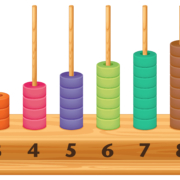Scaling
“On a 𝐬𝐜𝐚𝐥𝐞 of 1 to 10, where do you currently rate yourself?”.
As a coach and mentor, frequently I use the 𝒔𝒄𝒂𝒍𝒊𝒏𝒈 approach to measure progress.
As the coach, it can provide me with some really valuable insight into the coachee, their thinking and where they are at a given point in time with any specific situation.
Here are some examples:
On a 𝐬𝐜𝐚𝐥𝐞 of 1 -10…
…to what degree have you made progress towards this goal?
…how satisfied are you in this area?
…how determined are you to take this action.
There are always powerful benefits of 𝒔𝒄𝒂𝒍𝒊𝒏𝒈 too in turn for the coachee, by helping them to assess their position in relation to their ideal outcome i.e. their 10/10.
Many follow up questions usually follow on, as I probe further in any given situation where someone is trying to progress…
For example here is one situation to consider:
• You said that you were a 3 in regard to your confidence when providing feedback to your team member.
• Tell me what makes it a 3 for you, what is your experience?
• What does it feel like being a 3?
• What are you thinking about as a 3?
• What are the reasons for a 3?
• What feedback have you had to suggest you might be a 3?
• What are the reasons you are a 3 as opposed to a 7?
• What’s the difference for you?
• …….And many other questions follow on too!
It is more important to focus on the differences and then on the progress that can be made.
I have found 𝒔𝒄𝒂𝒍𝒊𝒏𝒈 to be a particularly helpful tool and use it frequently…
It’s great to try it out!
How can you apply this tool in your coaching conversations?









